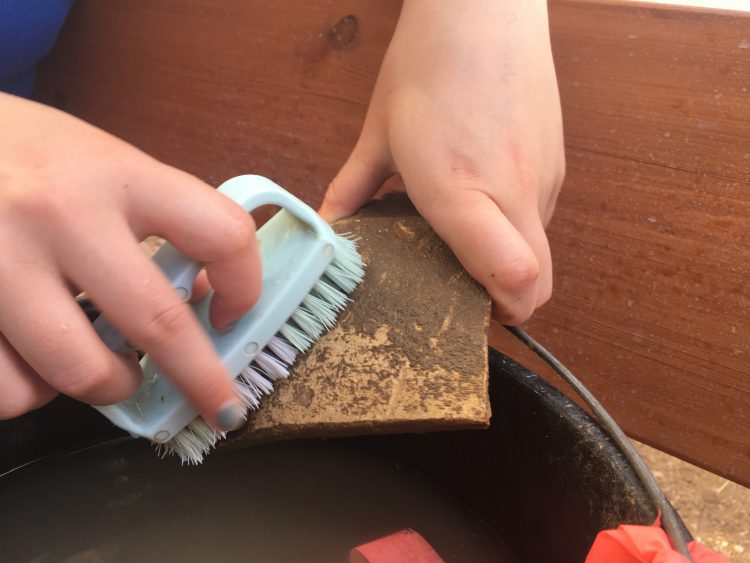From Shards to Sherds: An Archaeologist’s First Dig
By Anna Shamory.
A ceramic bowl slips out of your hands and crashes to the ground. You pick up a piece of the broken pottery, but the real question is what you call this broken piece. Is it a shard or a sherd? Your answer to this question likely depends on your exposure to archaeology in literature or spoken word.
I study archaeological science at Penn State University, so before coming to Tel Akko I had some exposure to the term ‘sherd’. Yet, I have never personally used the alternative to shard until I came to dig at the tel. Whenever I saw the term sherd being used, I always questioned why archaeologists chose or came to prefer this more jargonized spelling.
So after days of uncovering countless sherds, placing them into buckets, carrying said sherds in buckets down to wash, and then hours of brushing them to varying degrees of cleanliness, I finally decided to investigate my question of:
Why sherds and not shards?
A definition of sherd, according to Merriam Webster’s online dictionary, is “a fragment of a pottery vessel found on sites and in refuse deposits where pottery-making peoples have lived.” However, shard is a more generic term for “a piece or fragment of a brittle substance.” In short, sherd (short for potsherd) goes specifically with historic/ancient pottery pieces, while shards can be anything literal or figurative that is broken into pieces.
Even today, after weeks of saying sherd instead of shard, I sometimes do a double take when I see sherd written out somewhere, and I wonder how pottery ‘shreds’ something. My brain still thinks of a more typical word, shreds, over the archaeological variation that is sherds.
Since I’ve been converted to use the term sherd by the lingo here at the Tel Akko dig, I’ve learned so much more about pottery than I thought I ever would. Though I’m sure not all sites are chock full of sherds, the sheer amount of these broken pottery pieces uncovered and collected daily in the square in which I excavate is beyond any prior expectations I had about archaeology. My first day collecting pottery, I was extremely excited by every single piece I tossed into my pottery bucket. It was a thrilling experience to be touching literal pieces of history with my fingertips. Now, at the end of my third week here, I still very much enjoy finding pottery, but not every piece of pottery lends me that same excitement as before.
What do we do with the sherds?
In the late afternoons, we students and staff spend about two hours brushing clean all the pottery we collected the day(s) before. Us newbies quickly learned that washing a bucket full of the small pieces that lack any sort of identifiable ornamentation like a rim or design (and are around the size of an American half-dollar) is time consuming and not as much fun to do.
Nonetheless, I very much enjoy digging up pottery sherds, and then spending a relaxing fun time with my friends talking, listening to music, and of course, scrubbing the dirt off numerous potsherds!
To end, no matter how many years I handle pottery in the field, I hope I can keep a little spark of that excitement I had those first few days. What looks like a typical sherd in the field can end up being a beautifully decorated piece when washed clean.

